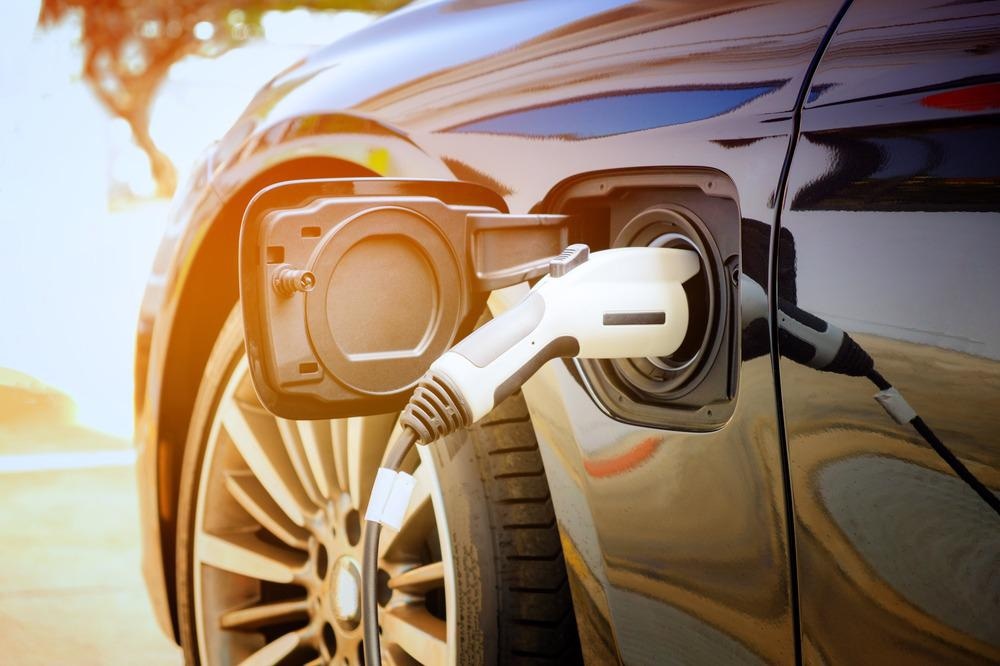.jpg) By Susha Cheriyedath, M.Sc.Reviewed by Skyla BailyNov 18 2021
By Susha Cheriyedath, M.Sc.Reviewed by Skyla BailyNov 18 2021Two researchers from China recently reviewed the usage of different olivine phosphates in a blend with other compounds to be used as a potential cathode for lithium-ion batteries. This review paper has been published in the journal Intechopen.

Study: Revisiting Olivine Phosphate and Blend Cathodes in Lithium-Ion Batteries for Electric Vehicles. Image Credit: tong patong/Shutterstock.com
There is a global rush to acquire lithium-ion (Li-ion) battery materials due to its high demand, but limited extraction, production, and supply. Moreover, there are environmental and safety concerns associated with it.
Scientists are trying to find alternatives to these; although they have to compromise on certain aspects of these batteries such as high energy density and cost, they can achieve any additional benefits such as safety and long cycling stability.
There are four primary components in a Li-ion battery, namely, cathode, anode, electrolyte, and separator. The selection of electrolyte and separator depends upon compatibility with electrode materials and in most cases, the anode is just graphite, so the selection of cathode materials is the primary focus of most researches.
![(a) Iron redox energy and potential can be adjusted by polyanion groups [5]. (b) LiFePO4 crystal structure [6].](https://www.azom.com/images/news/ImageForNews_57385_16372428974484812.png)
(a) Iron redox energy and potential can be adjusted by polyanion groups. (b) LiFePO4 crystal structure. Image Credit: Yujing Bi and Deyu Wang, IntechOpen
What is Olivine Phosphate?
Olivine is a crystal structure of A-M-PO4/SiO4, where A is alkaline earth metal like lithium (Li) or magnesium (Mg), M is transition metal/s like iron (Fe) and/or manganese (Mn), and they are bonded to either phosphate or silicate ion.
Especially, olivine phosphate has major commercial advantages like high power density, fewer safety concerns related to overheating and explosion due to wider operating temperature (suitable for powerplants and automobiles).
It also compensates for lithium’s flammability, has a long cycle lifetime, has no requirement of metals like cobalt (Co), and uses of high available inexpensive metals like iron and manganese. However, it has a lower energy density than Li-Co-based cathodes.
How about Lithium Iron Phosphate?
The olivine structure of LiFePO4 is formed by the P-O framework with space group Pnma. Iron and lithium atoms are located at octahedral 4a and 4c sites in the Pnma space group, phosphorus atoms occupy tetrahedral sites, and oxygen atoms have hexagonal-close-packed stacking order.
PO4 tetrahedral shares two edges with LiO6 octahedron and one edge with FeO6 octahedron. Li resides in chains of edge-shared octahedra and connects as the Li diffusion channel. PO4 polyanion structure is highly stable in thermal dynamics as P-O bond energy is high.
LiFePO4 and delithiated FePO4 structure do not change when heated up to 350°C in N2 or O2 atmosphere, which contributes to the high safety performance. Li diffuses in olivine LiFePO4 along [010] crystal direction, thus the pathway is one dimensional. Slow lithium-ion diffusion kinetics and low electrical conductivity lead to the poor rate capability of LiFePO4. These drawbacks can be overcome by element substitution, reducing particle size, and surface coating, etc.
![(a) XRD patterns of the LMP and LVP sample prepared by different ratios. (b) Influence of LVP amount on reversible capacity of LMP-LVP composite [29]. (c) XRD pattern of LMFP and LVP composite cathode [30]. (d) Rate capability of LMP and LVP composite cathodes [29].](https://www.azom.com/images/news/ImageForNews_57385_16372429128872444.png)
(a) XRD patterns of the LMP and LVP sample prepared by different ratios. (b) Influence of LVP amount on the reversible capacity of LMP-LVP composite. (c) XRD pattern of LMFP and LVP composite cathode (d) Rate capability of LMP and LVP composite cathodes. Image Credit: Yujing Bi and Deyu Wang, IntechOpen
Phase transformation mechanism in cathode during lithiation and delithiation is crucial for electrochemical response in the lithium-ion battery. When lithium-ion diffuses from LiFePO4, the olivine LiFePO4 cathode will transform into FePO4 which has the same structure.
Even after all active lithium ions are diffused from LiFePO4 into the electrolyte, lattice volume changes only by 6.5 to 6.8%, which shows high crystal-structure stability. Also, the solid solution mechanism supports fast lithium transportation.
The lithium utilization ratio in LiFePO4 is low (~0.6) and it decays fast resulting in low intrinsic electronic conductivity. As a solution, carbon coating is used to improve material conductivity. In this approach, carbon precursors are mixed with active materials followed by calcination.
However, the electrochemical response is affected by the optimized carbon coating quality on LiFePO4 by using different coating methods, different carbon sources, carbon structure, and carbon composites.
Advanced carbon materials such as graphene and carbon nanotubes can be used to make composites to achieve higher performance without much sacrificing, due to their excellent electrical conductivity. Additionally, carbon coating is also used to control LiFePO4 particle growth during calcination.
![Schematic figure of typical features in a) NMC, b) LFP, and c) NMC/LFP blend electrodes [39].](https://www.azom.com/images/news/ImageForNews_57385_16372429234951549.png)
Schematic figure of typical features in a) NMC, b) LFP, and c) NMC/LFP blend electrodes. Image Credit: Yujing Bi and Deyu Wang, IntechOpen
How about Lithium Manganese Phosphate?
LiMnPO4 has high redox potential, but electronic conductivity and lithium-ion diffusion kinetics are even worse than that of LiFePO4. Mn-doped LiFe1-xMnxPO4 can achieve higher energy density owing to the higher redox potential of manganese ions, but the rate performance decreases when the manganese ratio is increased.
Li3V2(PO4)3 has an open lattice framework, which guarantees fast Li-ion transportation in the cathode bulk phase. Thus, LiMnPO4 is often substituted by a small amount of vanadium. The composite cathode showed a higher rate capacity.
Reference
Yujing Bi and Deyu Wang, Revisiting Olivine Phosphate and Blend Cathodes in Lithium-Ion Batteries for Electric Vehicles [Online First], IntechOpen, DOI: 10.5772/intechopen.99931. https://www.intechopen.com/online-first/78388
Disclaimer: The views expressed here are those of the author expressed in their private capacity and do not necessarily represent the views of AZoM.com Limited T/A AZoNetwork the owner and operator of this website. This disclaimer forms part of the Terms and conditions of use of this website.